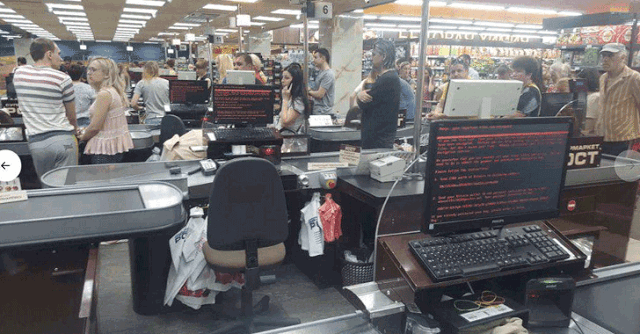Biometric Based Identity Verification
Biometrics use diverse technologies for measuring and analyzing physical human attributes such as fingerprints, eye retinas, voice patterns, facial expressions etc. for authenticating identities. Biometric Verification systems are rapidly gaining foothold in India over the past couple of years. Owing to an increased need for data security in several sectors, other means of biometric authentication other than fingerprint recognition is gaining traction in the country. Biometric time attendance sheets have become increasingly popular in corporate institutions since they reassure transparency and accountability in a flexible work environment and a mobile workforce.
The need for advanced security and authentication access to confidential data has significantly enhanced the use of biometric devices mandatory for operation excellence of an organization. In India, the biometric technology was hugely boosted following the large-scale government project – Aadhaar that has successfully employed biometric systems for identification and authentication purposes apart from other government projects such as issuance of VISA and e-passport.
The Biometric authentication market is projected to go vibrant in India since the promising end users include banking and financial firms, government, consumer electronics, defense, healthcare, home security and safety, transport and logistics, visa authentication services, commercial safety and security, and others (retail, hospitality, automobile and gaming). According to a research study that took place in 2015, suggested that the key drivers for voice and face biometrics include an increase in e-passport programs, government support, extensive use in criminal identification, use of biometrics in banking, healthcare and election administration in addition to large scale supervision during public association.
Growing concerns on data security in BFSI sectors boosts an increase in the demand for biometrics for access control and authentication purpose. The growth of biometrics market in India is significantly contributed by integrating biometric technologies in security systems. The rising demand of mandatory time and attendance systems in several offices is also fuelling the market growth and is estimated to grow in the immediate future. However, fingerprint biometrics is the largest segment in terms of revenue contribution, followed by Iris and Facial recognition technology. On the other hand, voice recognition is a rapidly growing segment in the rising mobile application domain and banking.
Usage for Biometric Attendance
The Biometrics technologies used to measure and analyze personal characteristics, both physiological and behavioral. These characteristics include fingerprints, voice patterns, hand measurements, irises and others, all used to identify human characteristics and to verify identity. These biometrics or characteristics are tightly connected to an individual and cannot be forgotten, shared, stolen or easily hacked. These characteristics can uniquely identify a person, replacing or supplementing traditional security methods by providing two major improvements: personal biometrics cannot be easily stolen and an individual does not need to memorize passwords or codes.
Transparency:
These technologies allow an employer an unparalleled means of knowing who was doing what, and when they were doing it and others in charge of large groups the ability to know who is in attendance at any given point in time. Hence biometrics help in making the attendance system of a company transparent restricting any fraud in the attendance.
Saves time:
Use of biometric devices saves a lot of time that is required while managing the attendance manually. With the biometric devices the employee has to just punch in when he comes and punch out when he goes, the total time is calculated automatically and whenever the employer needs a report he/she can download it from the machine and view it. Today some HR management software like HRStop that are integrated with biometric machines and allows the employer to see the attendance of the employees on his system within 10 seconds.
Saves Money:
Installing biometric devices is one time investment that an employer needs to make that caters his needs for years. Hence an employer need hire a person to manage the attendance and need not worry regarding fake attendance. Hence biometric devices not only make things easier for the employees but also help them save money.
Enhances Punctuality:
Use of biometric devices enhance the punctuality of the employees. Employees being aware that they cannot fake their attendance even if they come late makes them reach office on time daily. Hence it helps in increasing the productivity as the employee makes sure that he works for the number of hours he/she is entitled to.
Myths vs Facts
Ever since technology has paved its way from the operational to the managerial domain of the business, a lot of myths and false perceptions have stigmatized smart and automated management systems. These myths have put a question mark on the efficacy the technology and are the major reason why many organizations are resorting to perform their essential and regular managerial functions on manual procedures.
The biggest victim of such misguided conjectures is the biometric clocks and biometric time and attendance systems. The biometric technology has brought an incredible revolution in various industries and business spheres and has automated a host of functions and procedures.
In addition to that, biometric time and attendance system have eliminated the chances of time thefts and time frauds and has optimized the accuracy, efficiency, and authenticity of the recorded data and information. However, they are still prone to some false accusations. Here’s an insight into the common myths associated with biometric time and attendance systems.
Biometric Systems only operate under ideal conditions.
This is one of the most common myths associated with biometric systems that they can only operate under an ideal and controlled environment and will become useless if the environmental is dirty or has a cold or high temperature.
The reality is that today, the biometric systems are built on multi-spectral technology that is not affected by the weather, temperature or other influential environmental factors. They can conveniently detect finger tap or other biometric data and work optimally in all industries and environments.
Biometric Systems require an exuberant investment.
If you think biometric time and attendance systems are pricey and offer no significant cost versus benefits value, try comparing the cost of the system with the redundant expenditures that you have to incur in terms of time thefts, time frauds, and buddy punching. Biometric systems only require a one-time investment and by automating a variety of your regular tasks, save a considerable amount of your business costs and organizational budget.
Biometric Systems should only be used in the case of time frauds.
You might never have an idea about how, when, where and in what ways time fraud is happening within your organization. Buddy punching and time sheet cheats are just some of the ways in which employees alter, modify and play with their time records. Even if you think that your workforce is not involved in time frauds, using biometric systems eliminates all such risks that might arise in future.
Biometric Systems involve a high risk of data breach.
Contradictory to the popular perceptions, biometric systems do not store the actual biometric information or the personal credentials of the employees. Upon enrollment, the system creates a unique template for each information entry and that specific template is used to detect and record time for each employee.
Biometric Systems involve a tedious and time-consuming installation.
The enrollment of employees into the systems is considered as an exasperating and time-consuming task. However, it should be noted that this is only a one-time procedure that not only automates your regular time recording function but also allows you to get a real-time insight into the employees’ attendance and time checks from remote locations. Furthermore, the enrollments of information can be managed remotely through a cloud-based portal.


